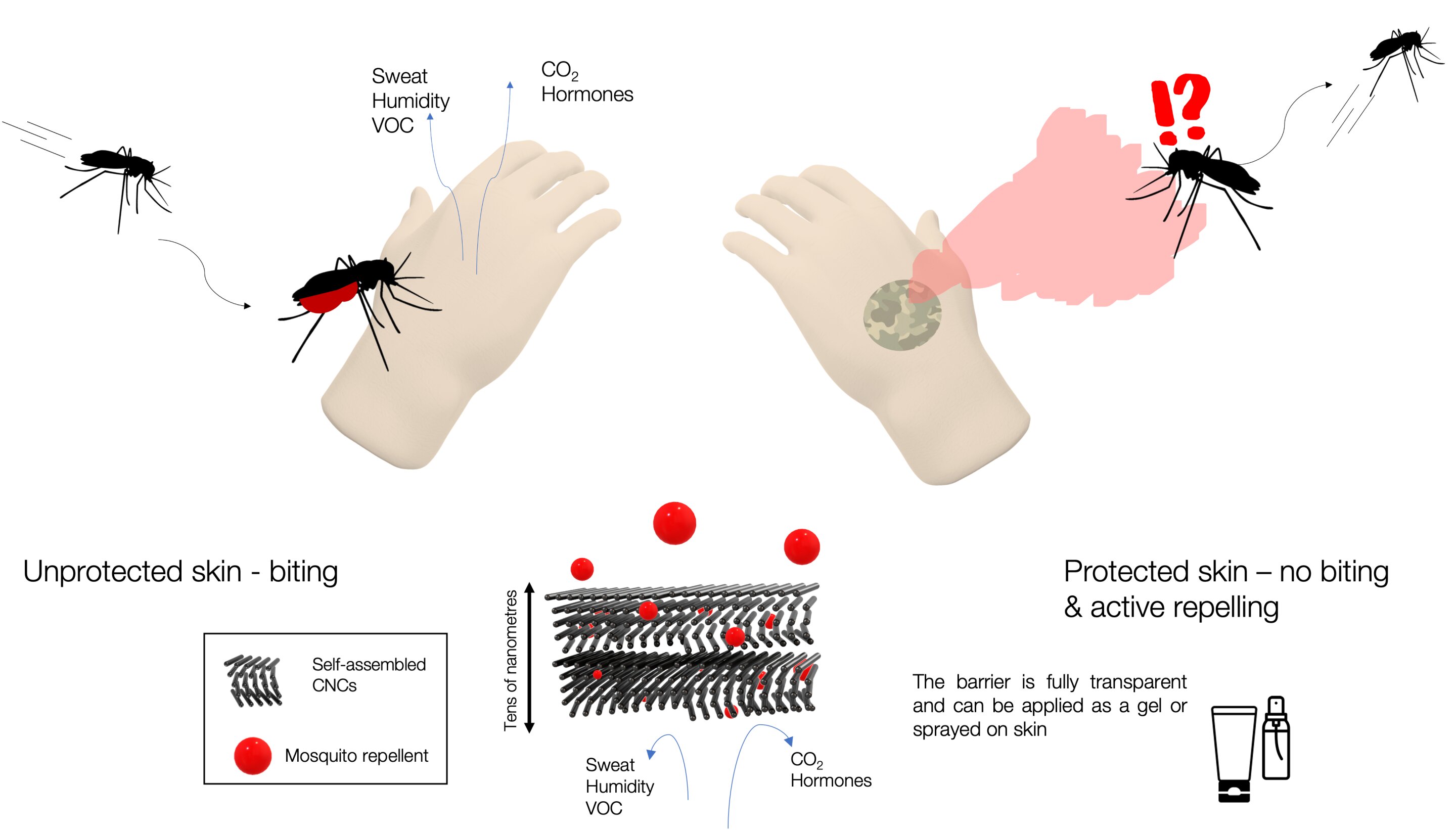Mosquito is the deadliest animal in the world and also one of the smallest. According to World Health Organization (WHO) estimates, mosquito-borne diseases like malaria, zika, chikungunya, and yellow fever kill some 725,000 people a year.
New research into mosquito bite protection proposes a readily available natural molecule – cellulose to create a product that can prevent mosquito bites.
Cellulose is the most abundant organic compound on Earth. The main constituent of plant fiber breaks down into nanocrystals when treated with sulfuric acid. These cellulose nanocrystals (CNCs) form a strong, but transparent barrier film.
This cheap and plentiful biological molecule is readily available as lumber industry waste, as well as local food and paper waste.
Scientists found that when mixed with water and a little glycerine, these cellulose nanocrystals (CNCs) can be applied to the skin as a spray or gel to block the mosquito’s bite.
The cellulose nanocrystal gel does not create a physical barrier, it actually functions as “chemical camouflage”
It hides the volatile organic compounds (VOCs) emanating from the surface of human skin that the insects use as cues to find a meal.
In experiments, the thin film of CNC gel acted like a chemical camouflage and reduced 80% bites compared to a hand exposed to the insects without the biomaterial barrier.







